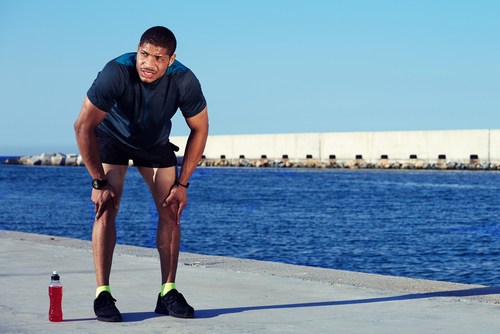Warm weather is the season for weekend fun runs, charity 5Ks and multistage team relays. It’s also the season when physicians and physical therapists treat the highest number of injuries related to running.
From plantar fasciitis to pain in the knees, hips, groin and back, most consistent runners have been derailed by pain or injury at least once. Avoiding some common early season training mistakes can keep runners healthy and competitive throughout the season.
Avoid these five mistakes for a fun summer of awesome training:
1. Skipping warmup and cool-down
While workout windows can be tight and difficult to secure during a given week, don’t use time constraints as an excuse to avoid properly warming up and cooling down before and after a run.
Some walking, light jogging, skipping, high knees and butt kicks prior to running increases heart rate and circulation, loosens up the joints and increases blood flow to the muscles. For your cool-down, do some light walking and stretching to help reduce the buildup of lactic acid, which can lead to stiffness and muscle cramps.
2. Wearing the wrong shoes
How your feet strike the ground will affect muscles and joints throughout your body’s entire kinetic chain, from the feet and ankles, through the knees and hips, and up into your spine and torso. If your shoes don’t fit properly, support your feet correctly or sufficiently absorb the impact of each stride, you’re going to feel it
3. Not listening to the heart and body
Don’t subscribe to a “no pain, no gain” model when running. Sure, you’ll want to push your body hard, but if you feel pain or an unnatural level of discomfort, stop and assess. Seek treatment from a physical therapist if your pain appears to be more than mild soreness.
4. Focusing only on cardio fitness
Cardio fitness is certainly important when it comes to running. However, when it comes to both injury prevention and performance enhancement, flexibility and strength are equally as vital. Stretch daily and during cool-down periods. Try some simple exercises like eccentric heel drops or body weight squats to help build strength in your calves, knees, hips and core.
5. Forgetting to rest
It’s good to push yourself, but rest and recovery are essential in avoiding injury, burnout and plateauing before you’ve reached your fullest potential. So always work rest into your long-term training regimen.
Visit SOL today for help recovering from and preventing running injuries
Whether you are a seasoned marathon runner or someone simply looking to stay fit by jogging through the neighborhood, we can all use some help when it comes to running. Our physical therapists at SOL can help you prevent running-related injuries and recover from them in the event that they happen. Contact our team today for more information about running injuries or to schedule an initial appointment.


